Various methods are used to improve and restore the soil at the site in agriculture. Of these, the most environmentally sound and effective is sideration: sowing a number of special plants with the subsequent incorporation of green mass into the ground. This article describes in detail the phacelia siderat: when to plant a plant, how to grow and harvest, and what results can be achieved.
Material Content:
Phacelia as siderat: benefits for plants
As siderates, annual phacelia species are usually used. Most often, this is Phacelia chrysanthemum (it is also tansy), a fast-growing honey plant native to Mexico and California. It is she who is considered a universal green manure suitable for growing on any type of soil.
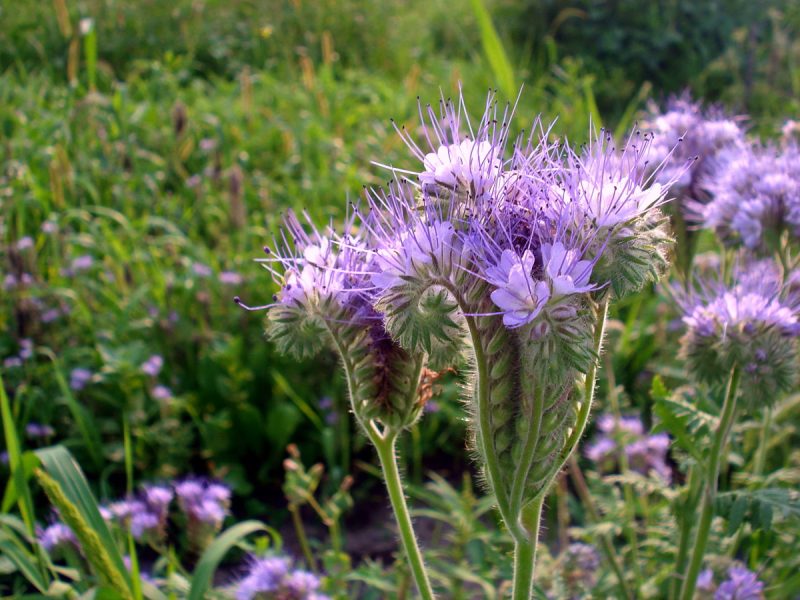
Growing phacelia on the site allows you to achieve the following effects:
- Deoxidation of the soil. Regular sowing of this plant well reduces the increased acidity of the soil, leading to a pH of 6.0-7.0.
- Reduced weeds. Experiments with sowing phacelia show that it well inhibits the growth of such weeds as wood lice, horsetail, buttercup, horse sorrel.
- Attraction of pollinators. Leaving part of the phacelia unkempt, they achieve an increase in the activity of bees and bumblebees on the site.
- Attraction of entomophages. Thanks to predatory insects that settle on the phacelia, the number of apple moths and moths, ringed silkworms, cherry and apple aphids, and bug bugs is reduced in the plots.
- Improvement of the soil. Root secretions of phacelia repel nematodes and wireworms, inhibit the reproduction of soil pathogens that cause root rot.
- Improving the soil structure. The roots of the phacelia break heavy clay soils, strengthen the sandy ones, protect the soil from erosion and desiccation.
- Increased activity of beneficial soil flora and fauna. Sites cultivated by siderats like to visit earthworms, and the effect of using EM preparations increases.
The indisputable advantage of phacelia as siderata is the ability to quickly form a plentiful green mass. Only 40-45 days pass from sowing to the beginning of flowering. According to Omsk agronomists published in 2005, planting phacelia on 1 acre is equivalent to adding 300 kg of humus to the same area. Thus, a significant increase in the amount of humus in the topsoil is achieved.
What crops are best for
The universality of phacelia consists not only in its unpretentiousness to soil conditions.
This plant is not a relative of any of our cultivated plants, so it is ideally integrated into the crop rotation. Phacelia is the only green manure suitable for sowing under any crop.
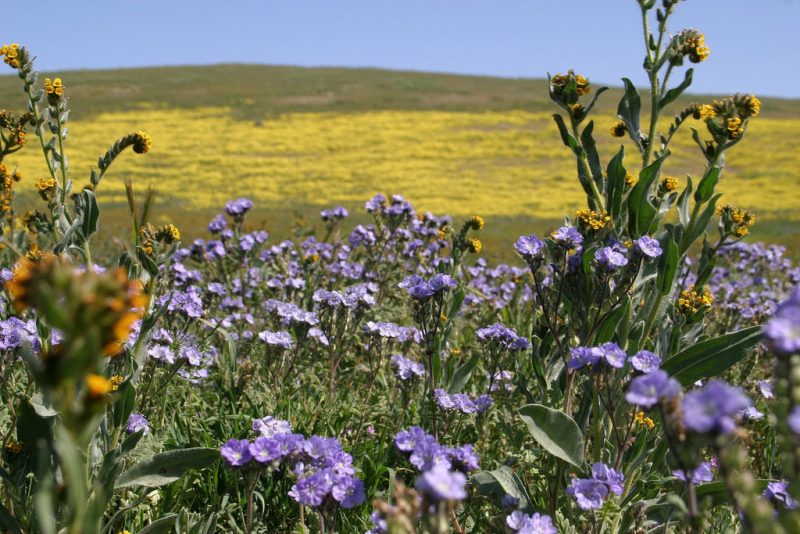
Excellent results are also obtained by seeding in a mixture with other siderates. This increases the yield of mineral compounds during the decomposition of organic matter. Particularly effective compounds: phacelia alfalfa or phacelia vica. They are suitable for all crops except legumes.
A mixture of phacelia and mustard disinfects the soil well, but it is not suitable for cruciferous crops - cabbage, radish, daikon, turnip. For these plants, it is better to take only phacelia as siderat.
When and how to sow green fertilizer
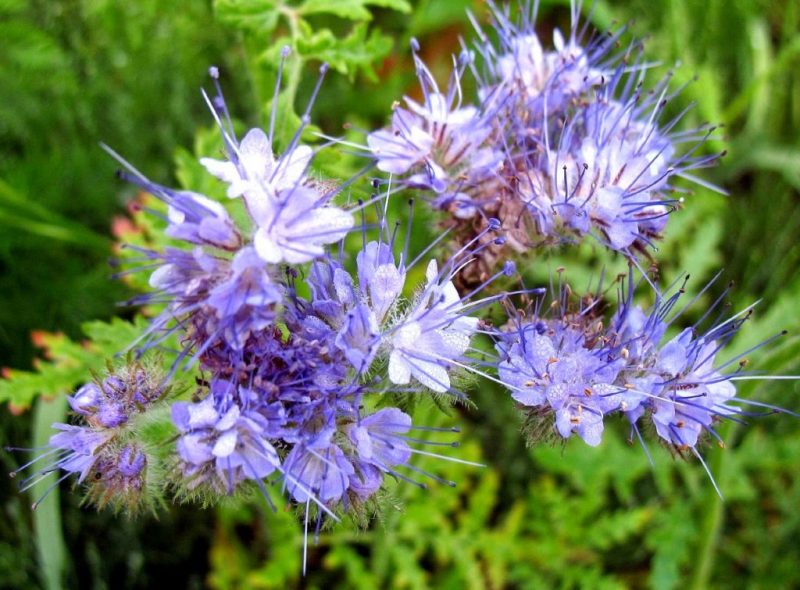
There are two main ways to grow phacelia as siderata:
- Integration into crop rotation. Siderat is sown in the off-season: before planting the main crop (in early spring) or after harvesting (in autumn). The grown plant mass is completely mowed and embedded in the soil as a green fertilizer.
- Co-cultivation. Siderat is sown on beds between rows of the main culture. The second option - sow phaselia a little earlier, let grow, and then plant seedlings under its cover.
The method is selected depending on which crop is planned to be grown using green manure. As a green fertilizer, phacelia is used for sowing salads, radishes, carrots, and beets. Co-cultivation is practiced in the cultivation of tomatoes, cucumbers, cabbage, peppers, eggplant.
Separately, it is worth mentioning the cultivation of phacelia on potatoes.
The scheme in this situation is as follows:
- Siderat is sown on future potato plots in early spring, and the first crop of green mass goes under digging.
- After planting potatoes, phacelia is sown again - on ridges and in aisles. By the time of the first hilling, the green mass on the ridges is mowed and laid in the form of mulch. In the aisles, you can either leave it to bloom, or also mow it for mulch.
To understand when to sow phacelia in spring, you need to observe snowmelt. This plant is not afraid of frost, so you can start sowing it immediately after the complete melting of snow.
Autumn sowing is possible from September to the onset of frost. When practicing sowing in the winter, it is necessary to take into account the possible death of part of the seeds and sow them in early spring.

Phacelia seeds are very small, and to get uniform seedlings, they are best mixed with sand or husk. Deep seeding into the soil is not required - it is enough to sprinkle them with a layer of 1.5-2 cm. But you also should not leave seeds on the surface - sunlight inhibits their germination.
Features of the care of siderats phacelia
Phacelia does not require any complicated care.
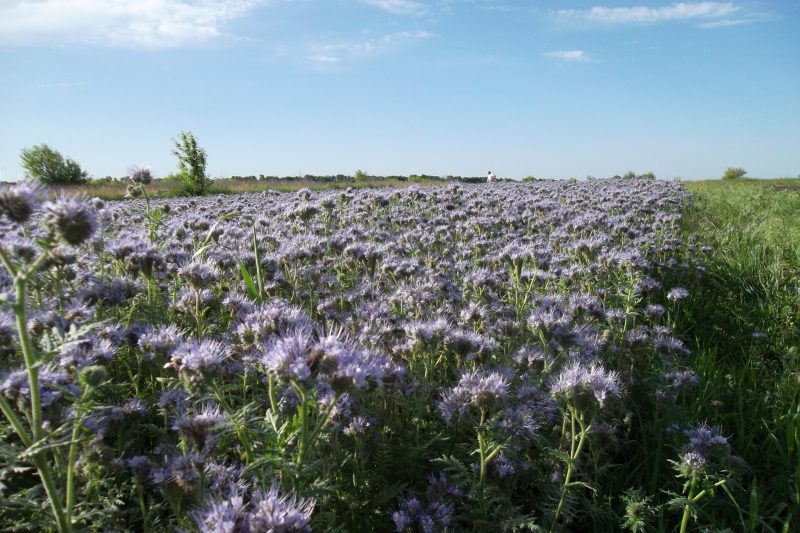
There are only two main operations:
- Watering. It is necessary before the emergence of seedlings, if the soil dries quickly. After phacelia rises and begins to develop, it will have enough atmospheric moisture.
- Thinning. It will be required if the seedlings are too thick. The optimal distance between them is 5 cm.
If phacelia is sown on a poorly treated, clogged area, one weeding may be needed. Young shoots are too tender and can not cope with strong perennial weeds on their own.
The nuances of growing in a greenhouse
Phacelia in the greenhouse can be grown throughout the season together with cultivated plants. In spring, it is better to sow it early to plant seedlings under the cover of green mass. This method gives excellent survival and makes the plants healthy and strong.
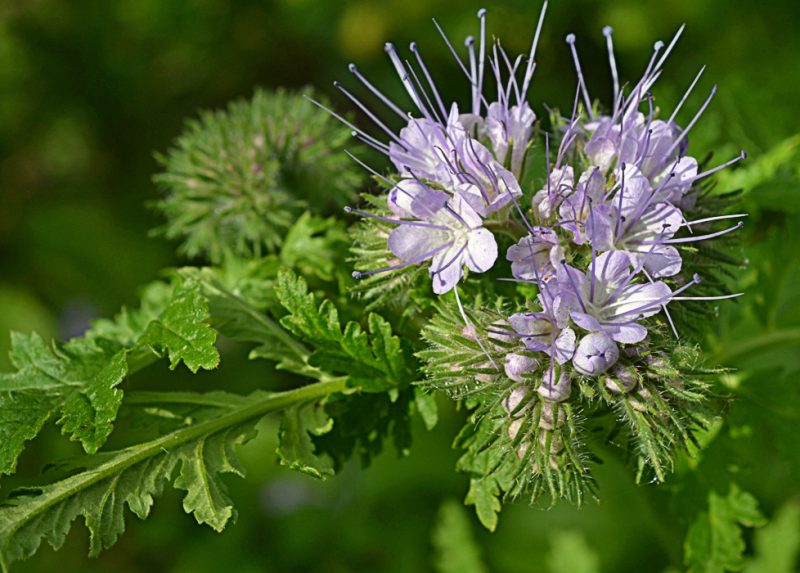
In the fall, the fatselia in the greenhouse can not be mowed. The ground mass during the winter rots itself, and in the spring it remains only to patch up the remains into the ground with a plane cutter.
When to remove siderate
If phacelia is grown as a precursor, harvesting is carried out in the budding phase, before flowering. During this period, the volume of green mass reaches its maximum, but it is still quite tender and juicy and quickly decays in the soil.

When co-growing green manure with crops, you can leave part of the phacelia bloom, and cut the rest and lay in the aisles as mulch. Some vegetable growers even refuse to mow.
Since phacelia takes water and food from deeper layers of the soil than cultivated plants, it not only does not compete with them, but also provides them with additional nutrition.
With phacelia, you can easily get your own seeds, which will bring the costs of sideration to zero. For this, plants planted in the spring are suitable. Seed collection is carried out in stages, as the bolls are bored, from bottom to top.
Numerous observations have shown that phacelia positively affects the development of vegetable and fruit crops and increases their productivity. The phytosanitary ability of siderat makes it an indispensable assistant to the farmer.












